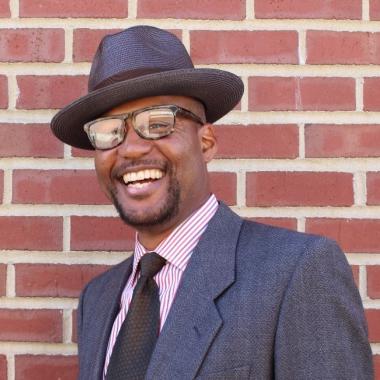How Philanthropy Can Preserve Affordable Housing and Keep Residents in their Homes
Philanthropy brings a special appetite for innovation and has the capacity for greater risk-taking – and those stances are needed at this moment to preserve affordable housing.
When affordable housing is destroyed – through neglect and disinvestment, demolition, increased rents - people lose their homes, neighborhoods lose community, and the region becomes a more congested and less interesting place.
When I told my parents that I’d be working in housing preservation, they immediately understood its potential impact. My mom shared a core memory about an apartment building across from the school where she used to work that was torn down. The families who lived in those apartments were not only displaced, but their children couldn’t attend that school anymore.
We are all inter-connected, so we need to build a just and equitable housing ecosystem for Northern California that offers everyone a safe, dignified, and affordable place to live.
Philanthropic resources are well-suited to invest in new models, pilots, and the replication of pilots at different scales, with different partners across geographies. Building a deeper tolerance for risk also comes with a tolerance for projects that are challenging, even messy, where it can take time and mistakes and learning to get it right.
We need a strong housing preservation ecosystem as part of our larger toolbox in responding to the housing crisis, and we have the building blocks here in the Bay Area – with our thoughtful philanthropic partners and innovative organizations on the ground.
In the first of NCG’s two-part series, “Home Today, Home Tomorrow: The Housing Preservation Ecosystem” the speakers spoke more about some of these building blocks.
New funding sources are being planned and coming online – including BAHFA’s Regional Preservation Pilot funding program, the State’s Foreclosure Intervention and Housing Preservation Program (FIHPP), and the 2024 bond that could raise $10-20 billion for housing across the Bay Area, with at least 15% set aside for preservation.
In addition, the Bay Area has a rich and growing ecosystem of organizations engaging in housing preservation, specifically in community-centered housing preservation. Community-centered housing preservation – according to Urban Habitat’s report – encompasses two ownership models and a range of organization types. Resident controlled ownership is facilitated by community land trusts and limited equity housing cooperatives nonprofits. Ownership with a strong democratic governance and engagement often includes community development corporations and nonprofit developers.
How does housing preservation keep residents in their homes?
Older homes have long provided affordable places for families to live and communities to come together and thrive. But over the past decade, predatory lenders and housing speculators have treated these homes as investment assets. They raise rents and sale price so to maximize profits, in turn displacing communities of color and low-income communities from neighborhoods they long have called home.
When you prioritize profit over people, housing gets commodified to the highest bidder. According to a report from Enterprise Community Partners, between 2012 and 2017, the Bay Area lost approximately 32,000 unsubsidized affordable homes per year, a 37% decrease over five years.
Preservation is a housing strategy that disrupts this process.
Instead of homes being bought by investors who increase rents to maximize profits, mission-driven organizations buy these buildings, usually with a combination of public and private funding sources, and operate them as permanently affordable homes. My organization, Local Initiatives Support Corporation (LISC) has found that in the preservation projects we made loans to, over 85% of tenants are people of color.
Also referred to as acquisition-rehab, housing preservation is faster and more cost effective than building new construction. Working with existing buildings means NIMBY (stands for “Not In My Backyard” to characterize residents who oppose developments in their local area) neighbors and policies don’t apply, and after acquisition, immediate life and safety repairs can dramatically improve living conditions for tenants in a matter of months. Total development costs typically range from $200,000 - $400,000 a unit, less than half of what it costs to build new. That said, housing preservation also comes with different risks than building new affordable housing. Major rehab needs don’t always show up on an initial property inspection report, and working with existing tenants requires more intense up-front staffing and strong relationship building.
What can philanthropy do to help community-centered preservation organizations leverage this moment?
The housing preservation ecosystem needs two specific kinds of investments from philanthropy:
1. Capacity building – Often a broad term, I use capacity building in this context to refer specifically to building organizations’ muscles to meet the requirements of public capital funding sources. Organizations that use these funds will build experience, improve their skills and grow their balance sheets – strengthening their organizations for future impact. However, these capital programs have specific requirements that organizations may not be able to meet without support. Philanthropy must support the skills and tools needed by community-based organizations to access upcoming public funding programs.
For example, one of the programs mentioned above requires that organizations have experience in managing acquisition/rehab projects, including in project management, property management, construction management, asset management, and property management, and more. However, organizations can leverage staff experience, consultants, or joint venture partnership to meet these requirements. Philanthropy can work to understand specific experience gaps housing groups may have, and move money to help them fill those gaps and access public resources.
2. Ecosystem infrastructure – The Urban Habitat’s report that I mentioned earlier details five categories, from tenant organizing to funding programs. I want to uplift the, perhaps unsexy, but deeply critical category of backend support. In part two of NCG’s “Home Today, Home Tomorrow” series,Register Here, speakers will describe some of the work they are doing to build out more of this infrastructure needed for the ecosystem to operate smoothly, and there’s more work to do to explore what institutional supports can look like that center racial equity, allow for a range of ownership models, and ensure that people have safe, healthy homes for the long term.










